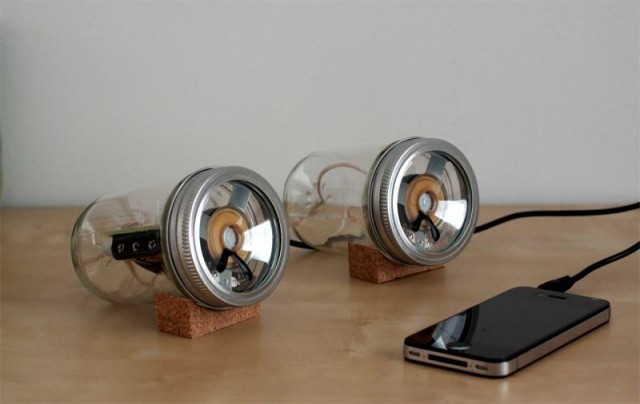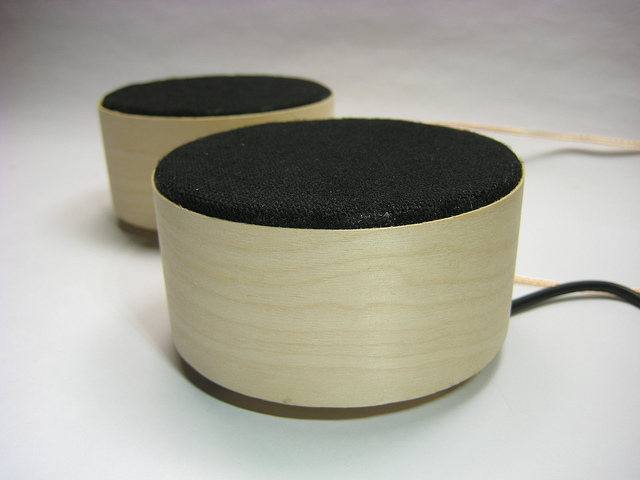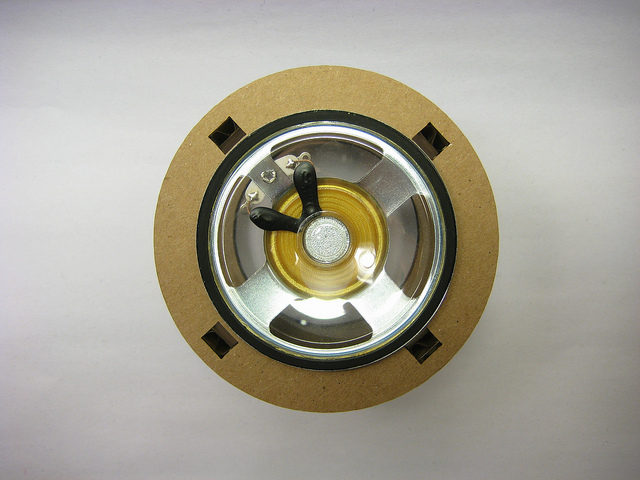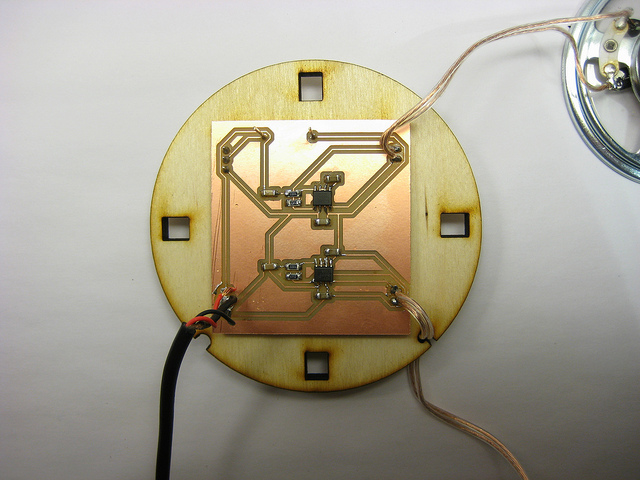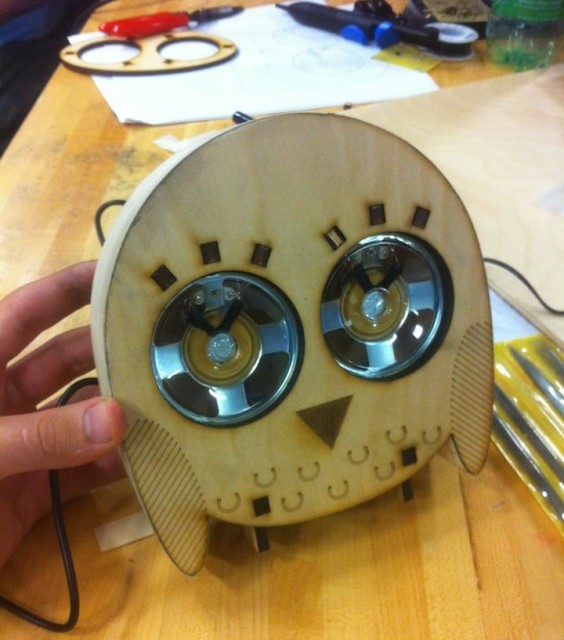Who says you can’t make your own consumer electronics? David A. Mellis, a co-creator of Arduino who now is starting a PhD in Leah Buechley’s group, High-Low Tech, at the MIT Media Lab, has shared his Fab Speakers, an open source, portable speaker project:
These portable speakers are made from laser-cut wood, fabric, veneer, and electronics. They are powered by three AAA batteries and compatible with any standard audio jack (e.g. on an iPhone, iPod, or laptop).
Why open source them? Mellis says he designed the speakers to be affordable and easy to assemble, in the hopes that he would “see changes or additions that I didn’t think about and to have those changes shared publicly for others to use or continue to modify.” Speakers are perhaps ideal for this exercise: the housing matters, both aesthetically and functionally, and because a speaker is something relatively straightforward and simple, it’s easy to imagine modifications that retain the basic role of the design.
Big-league design blog Core77 takes note of what sharing this design can mean, as Mellis turns to designer Sarah Pease to imagine an alternative housing:
Here’s a great example of what can happen when experimental research is documented and posted on the web with plenty of explanation and resources. RISD student Sarah Pease, a junior in Furniture Design, took part in an independent study with the High-Low Tech Group at MIT’s Media Lab this past Fall.
Sarah Pease turns to something you probably already have in your house:
Using readily available household items and basic construction methods allow for even further customization and flexibility of the Fab Speakers. Varying jar shapes/sizes can be mixed with alternate feet for different looks.
High-Low Tech Research Group Project’s Jarring Effect
Building speakers was once a common activity, to the point that many, many musicians made their own speakers or amps or simple effect circuits. For all the excitement over DIY these days, a lot of people don’t have this experience – but with Internet documentation, the time is right for more.
Indeed, I’m keen to hear from people who do have experience building speakers: what might improve the sound quality of this design, and looks aside, what would be the best housing shapes and materials?
In the meantime, I’ll have to give this a try:
Fab Speakers [David Mellis @ MIT Media Lab]
http://sarahpease.com/audioJar
More pics:
Via comments, here’s yet another design – Jon Moeller’s adorable “owl” speakers:
http://moeller.io/owl-speakers.html
I have a bunch of jars, so I may need to give the jars a try here.
